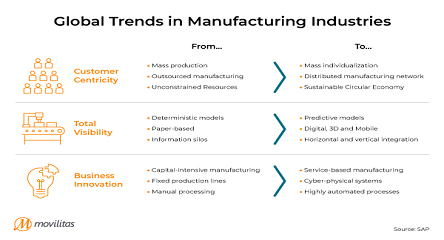Scheduling technologies have improved over the years, becoming more powerful as organizations work to leverage their enterprise systems and data (for example, in SAP) to more efficiently manage their resources. The purpose of resource scheduling, in an asset maintenance or service management context (sometimes also called scheduling and dispatch), is to:
- select an appropriately skilled and available resource to complete a task or series of tasks
- maximize resource utilisation
- minimize response time
Usually, a large volume of work orders or service orders are involved in the process.
Scheduling technologies go far beyond basic calendaring capabilities found in maintenance software and perform complex computations over large data sets so people can make the best decisions. Your company has a lot of options to select from these days. Many offer value-added features that could be of benefit to you, such as:
- multi-staged and multi-resourced job scheduling
- different types of scheduling automation and rules based on scheduling policies
- real-time monitoring and early warning of potential service-level violations
- dynamic booking windows for customers
- planning boards and other graphical views for easier management
- workflows based on predetermined triggers
- simulation scheduling
- advanced analytics
So, if your organization is thinking about implementing or upgrading a scheduling function, here are three of my key tips based on my experience.
Tip 1: Consider the level of change required
If scheduling technologies are a new concept for your organization, you may need to consider the level of change required by your people. It could be better to start off with simpler scheduling techniques and mature over time to more sophisticated systems. Making a big change often carries some risk, especially if you may have dependent business processes still to mature (I will talk about these in my next tip). People still need to get the job done, so the scheduling solution should be seen as helpful and beneficial, and not confusing and unreliable.
The “sales pitch” of resource scheduling solutions often looks impressive, and in many cases, they are indeed. However, there could be a difference between what you can do and what you should do. One organization I worked for only needed a relatively simple process of scheduling resources. They would do their standard work order planning in SAP and then use a scheduling solution to optimize mainly work order task resources (work crews and work equipment) and date/times in bulk.
They would then simulate a schedule using the software’s powerful algorithms, make any final adjustments, and once happy, send the optimized schedule back into SAP to update the work orders that were then released like normal. That was enough for them at that time. It was relatively uncomplicated, gave them a big benefit and did not create too much change impact on people.
It is good then to acquire some knowledge on what the options and practical implications are for your situation and to get the maximum benefit from the cost. An experienced consultant who is vendor-agnostic can also be a good start.
Tip 2: Have appropriate supporting business processes
Scheduling is on the front end of good business processes. After all, if you schedule someone to work who requires spare parts, someone else will need to ensure the parts are available – otherwise, the scheduling doesn’t go to plan!
One way to illustrate the importance of this concept is to consider a fictional asset-intensive organization that may have something like the following five integrated business processes running over different time horizons:

From the above diagram, we can see how important supporting business processes are for effectively scheduling our work in the end. In fact, it is the integrated nature of these processes that make using a scheduling solution with an Enterprise Resource Planning solution (such as SAP) so very powerful and popular. Knowing how you can best schedule your resources will directly impact both your budget and the levels of service you can offer stakeholders and customers. You are also more likely to stay ahead of your competitors.
A variation to this point is also to consider if you need route planning in addition to scheduling. If your people travel over diverse locations, this may be necessary to effectively schedule. It is not good to schedule someone 5 jobs in a day if the routes taken only allows them to do 3. If route planning can also reduce the amount of “windshield time, ” this is also worth considering. Proper routing keeps customers happy while minimizing expenses such as gas, vehicle upkeep and more.
Tip 3: Always ask – who has the knowledge to optimize?
We should not assume that resource scheduling implies some form of centralized control over the work. There are many different scheduling policies that can support either centralized or more decentralized control. Ask yourself – who has the knowledge to optimize the work?
A strong form of centralized scheduling tends to be suitable for standard and repeatable tasks, like deliveries and standard services. The driver or technician does not have to make any key decisions to optimize the schedule. But not everything is like this.
For example, some types of work need to open the equipment first to see the problem or dig a trench to see a cable, or work outside in uncertain weather – before they can decide what is the next best thing to do. In this case, a lot of the knowledge is local, and a scheduling policy that allows for some decentralized control is often unavoidable. This is where different scheduling policies and processes can be used for certain work types or work areas, whilst still ensuring overall work and resource optimization.
Summary
In an asset management context, we can clearly see the potential benefits of a suitably selected and implemented scheduling solution. It is also not hard to imagine the benefits in other contexts such as project management or capital works. Maintenance to support manufacturing also requires specific functional integration with production processes.
There are then a surprising number of options in terms of scheduling functions and integrations, as well as many different patterns of scheduling processes. If implementing resource scheduling software represents a change to the way you currently do business, it is important to get a solution that best fits your organization and your capacity to change. This way the benefits are more likely to be seen quickly, and the changes accepted by your people.
For more guidance on exploring the right options for your business, schedule a free 1-hour assessment with our asset management experts.






